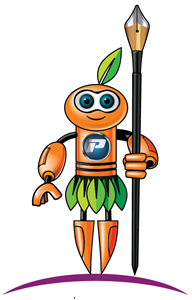27 Aug Digital Adoption
Digital Adoption Platform: From the Writer’s View
– Shivani Waikar
In the realm of technology, user experience plays a vital role in the success of any product. Good technical documentation always enhances the usability of the product. One such way of enhancing product experience is using a Digital Adoption Platform (DAP). A digital adoption platform is an automated software tool layered on top of an enterprise application. It acts as a step-by-step guide that holds the users’ hands while using the product.
Though DAP is also a step-by-step guide, content creation for traditional user guides and DAPs differs.
Let us understand this difference.
Consider a scenario where users have three options to choose from, and based on the users’ selection, the fields on the screen change. Let us compare the scenarios for a traditional user guide and DAP, and understand the thought–process content creation for DAP.

Scenario: User Guide
In a traditional user guide, content creation would involve the following steps:
- First, Introduce the section where users have three options to choose from. List the three options and hyperlink them to the appropriate sections.
- Describe each option in detail, and outline the steps users need to follow to select this option. Include hyperlinks to a separate section that provides a field description or more information on this option.
Scenario: Digital Adoption Platform (DAP)
In a DAP, the content creation process would differ significantly, taking advantage of the platform’s interactive and contextual capabilities.
Create a product journey for all three options.
The first step is to introduce the field/section. The flows for all the three options will be linked to this field.
Now, depending on the option selected, the DAP would automatically trigger the respective flows. When a user selects an option, the DAP recognizes their choice and dynamically displays a step-by-step guide for that option and walks them through the process.
Thus, traditional user guides rely on separate sections with hyperlinks, while DAPs provide a more interactive and personalized experience, thus enhancing the usability of the application.
Here are some more differences:
Details and length:
Traditional user guides tend to be lengthy and cover all possible scenarios and use cases. DAPs focus only on the required actions and guides users through specific processes.
Continuous updates:
DAP content is more agile. With every release, the content needs to be updated to keep up with changes in the application, including the smallest change in the field name. Traditional user guides may undergo updates but usually at a slower pace, reflecting major releases or new versions of the product.
Apart from user guides and product journeys, there’s a lot that DAP has to offer. We can highlight the introduction of new features, notify the feature releases, track user actions, embed training videos, and so on. All this help can be provided within the application, without requiring the user to navigate outside the application.
With the ever-evolving technology, ensuring a seamless user experience has become paramount for businesses. And there’s no other way than good documentation for a better user experience! It’s time to a’dap’t to the future!
About the Author
Shivani Waikar works as a Senior Technical Writer at Odessa Technologies. She specializes in digital adoption. When she is not writing, you can find her traveling and exploring new places.
Current Role: Senior Technical Writer
Company: Odessa Technologies
City: Pune, Maharashtra
Connect at LinkedIn





No Comments